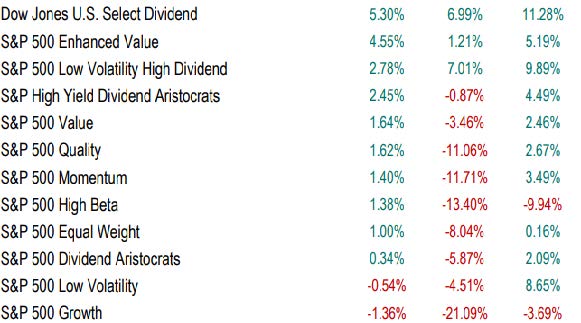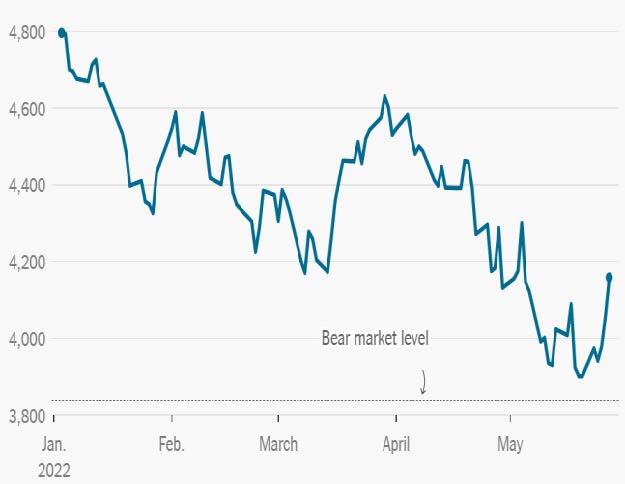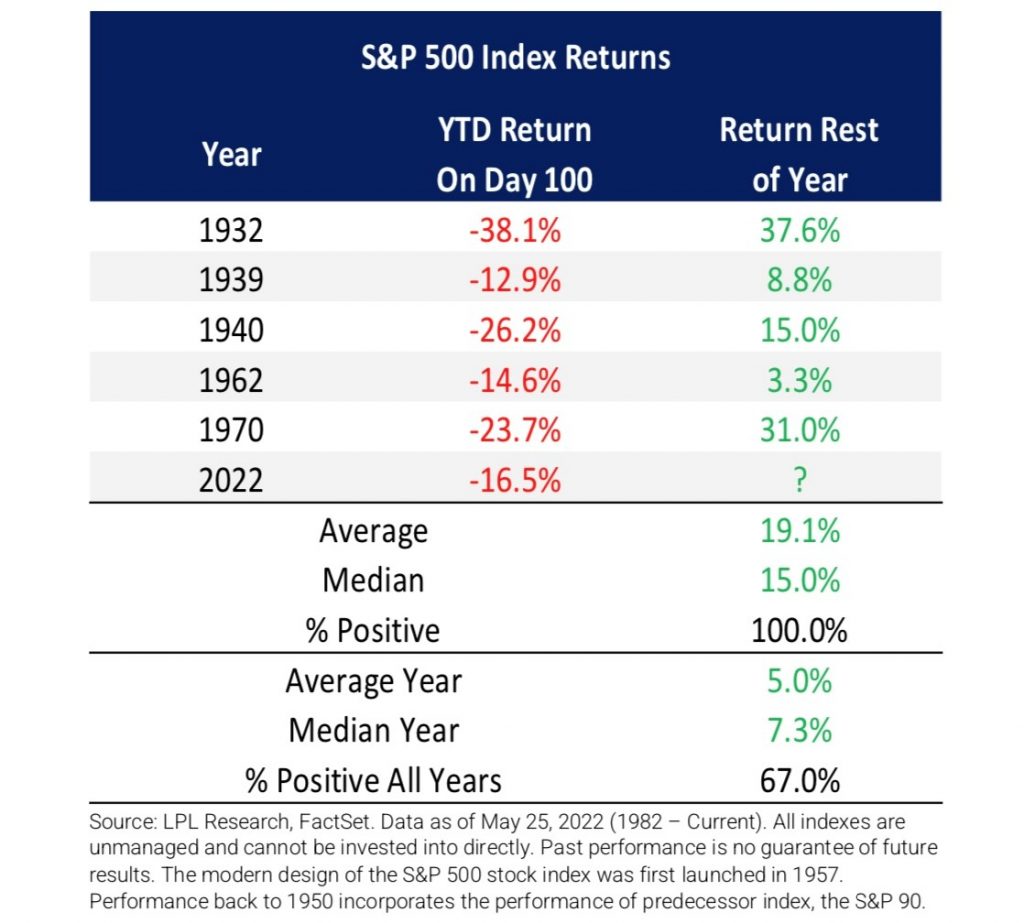May’s Rebound
Despite negative returns in April and market turbulence throughout May, equities finished
marginally higher for the month. US small-caps were amongst the best performers (+1.9%),
followed by international developed equities (+1.7%) and US value (+1.7%). Bonds also delivered
mostly positive returns as investment grade corporates were up 1.9%, high yield credits rose
1.6%, and municipal bonds gained 1.5%. Commodities produced mixed returns as crude oil
and broad-based commodities rose (+10.8% and +1.9%, respectively) while gold and silver fell (-3.3%
and -5.7%, respectively).
Exhibit 1: Trailing Returns as of May 31, 2022

What’s Next for the Fed?
Earlier this month, the Federal Reserve raised interest rates by half of a percentage point. This marks the largest single rate hike in two decades as the Fed attempts to battle stubbornly high inflation. Members of the committee also outlined a plan to begin reducing its bond buying program starting on June 1st. As a result of the shift towards a more aggressive tightening policy, markets experienced volatility this month as recession fears mounted. Moreover, the Meeting Minutes released on May 25th suggest some officials remain united on the need for half percentage point increases at both the upcoming June and July meetings. However, other members have indicated the Fed may slow rate increases if monthly inflation readings continue downward, and even see a possible pause for rate increases in September.
Dividend and Value Strategies Outperform
As seen in the chart below, both dividend and value-oriented strategies led in May, posting gains from 2% to over 5%. The outperformance of these defensive plays can likely be attributed to heightened uncertainty amid concerns of tighter monetary policy and recession worries. Conversely, growth was the biggest laggard for the month and has underperformed significantly since the start of 2022 given it’s 21% decline.
Exhibit 2: S&P Dow Jones US Index Dashboard – Factor Based Equity

performance based on total return. Past performance is no guarantee of future results.
Flirting with Bear Market Territory
A bear market can be defined as a decrease of approximately 20% from recent highs. Given the
S&P 500’s peak on Monday, January 3rd, the index crossed this threshold on Friday, May 20th, but
rebounded back above in the final hour of trading. This marked the seventh straight weekly loss for
the S&P 500, its longest loss streak in decades. However, since May 20th, the index recovered
losses and finished slightly up month over month. Economists attribute the rally to slowing but still
elevated inflation measures and favorable earnings reports, which implies the sell-off may have been
exaggerated.
Exhibit 3: S&P 500 Closes Just Above Bear Market
Threshold

Will the S&P 500 Bounce Back this Year?
According to LPL Research, the previous 5 worst starts to a year measured by the performance of
the S&P 500 were followed by greater returns for the remainder of each of those years. Additionally,
while the average return calculated from the 100th day to year end across all years is 5%, the average gain across the same period of the last 5 worst starts is almost four times greater at
19.1%.
Exhibit 4: S&P 500 Index Returns from Day 100 Until the End of the Year

Stick with Short-Duration and Inflation Assets
Long-duration assets are experiencing a recession
while there is a bull market for inflation-sensitive
assets. In the current environment, it’s crucial to be
globally diversified, own multiple factors, and utilize
alternatives. It is important to hedge inflation risk
as CPI readings may not return to their former trend
line in the foreseeable future. Panic in the market
may have also reached its peak as it often
coincides with market bottoms. Regarding the Fed,
we believe there is a high probability that we have
seen peak Fed hawkishness and bearish
sentiment.



